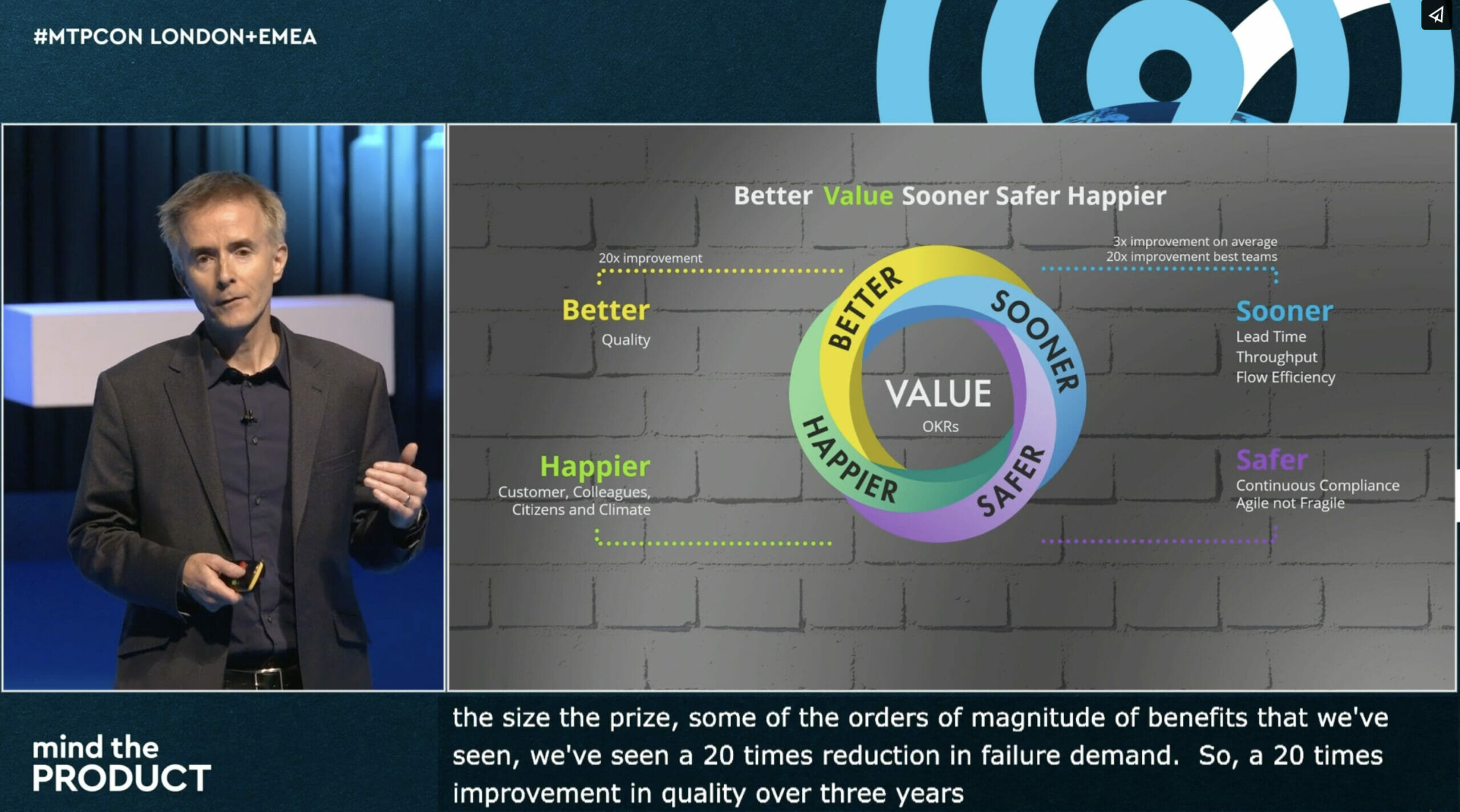Agile product management has emerged as a cornerstone strategy for organizations aiming to navigate the fast-paced world of technology and innovation. By incorporating Agile methodologies into product management, companies can achieve rapid innovation, adapt swiftly to changing market demands, and significantly enhance product value. This article delves into the principles of Agile Product Management, the challenges encountered in its implementation, and strategies to overcome these hurdles with real-world examples from my experience.
Agile Product Management combines the Agile framework's adaptability and iterative processes with product management's focus on delivering customer value. It emphasizes continuous improvement, flexibility, customer feedback, and cross-functional collaboration. This approach allows teams to respond quickly to changes, prioritize effectively, and foster innovation.
1. Embrace change: Agile product management thrives on change. It regards change as an opportunity for improvement rather than a setback.
2. Customer-centric approach: The end-user's needs and feedback are central to the product development process, ensuring the final product is both valuable and relevant.
3. Iterative development: Products are built and improved in cycles, allowing for constant feedback and adjustments.
4. Cross-functional teams: Teams consist of members from various disciplines working collaboratively, breaking down silos and leveraging diverse skill sets.
5. Leadership and vision: Clear vision for our product and communicate this across all levels of the organization.
Implementing Agile product management has its challenges. Here are some of the obstacles I faced, along with strategies employed to overcome them:
To address the issue, we instituted regular backlog grooming sessions. These meetings involved the product owner, development team, and other stakeholders reviewing the backlog items together. The aim was to evaluate each item’s relevance, estimate the effort required, and reprioritize tasks based on current project goals and user needs.
During one of our grooming sessions, we discovered a set of features that were no longer aligned with our strategic direction. By removing or deprioritizing these items, we were able to streamline our focus towards more impactful tasks.
We adopted the MoSCoW method to prioritize our backlog effectively. This method categorizes tasks into four buckets: Must have, Should have, Could have, and Won’t have. This prioritization technique helped us to focus on what was essential for each release cycle.
Applying the MoSCoW method, we identified that enhancing our payment processing feature was a "Have" for the upcoming sprint, driven by user feedback and its potential impact on the user experience.
Another strategy was breaking down larger, more complex backlog items into smaller, more manageable tasks. This not only made the work seem less daunting but also helped in estimating efforts more accurately and achieving quicker wins.
A significant overhaul of our user interface was broken down into smaller tasks like redesigning the dashboard, updating the navigation menu, and improving form layouts. This approach allowed for incremental improvements and made it easier to track progress.
To prevent the backlog from overwhelming our capacity, we set Work in Progress (WIP) limits. This lean management principle ensures that the team focuses on completing current tasks before taking on new ones, helping to maintain a sustainable pace and improve focus.
By limiting the number of active tasks to the capacity of our team, we ensured that efforts were concentrated and throughput increased, as tasks were completed before new ones were started.
To address this challenge, we adopted the MoSCoW method (Must have, Should have, Could have, Won’t have this time) as our primary prioritization framework. By categorizing tasks into must-have, Should have, Could have, and Won’t have, we could more easily identify and focus on work that offered the highest value to our customers and our business.
Implementing this framework helped us recognize that improving our data encryption for user security was a "Must have" feature, whereas adding new user profile customization options was classified as a "Could have."
Incorporating user stories and direct customer feedback into our prioritization process was crucial. By understanding the user's perspective and pain points, we were better equipped to prioritize features that directly addressed those needs, enhancing user satisfaction and product-market fit.
After receiving consistent feedback about the cumbersome checkout process, we prioritized redesigning this flow, resulting in a noticeable uptick in conversion rates.
Holding regular meetings with all stakeholders, including product owners, developers, and marketing teams, ensured that prioritization decisions were well-informed and aligned with overall business objectives. These sessions provided a platform for discussing the impact, effort, and strategic importance of pending tasks.
During one such meeting, it was decided to fast-track the development of a feature requested by a major client, recognizing its potential to open new market opportunities and drive revenue growth.
We also emphasized a data-driven approach to prioritization, analyzing metrics such as user engagement, feature usage, and market trends. This approach helped to objectively assess the potential impact of different features or improvements.
By analyzing usage data, we discovered that a significant portion of our users engaged with our platform through mobile devices, leading us to prioritize mobile optimization and responsive design enhancements.
Initially, our teams operated in silos, leading to inefficiencies and a lack of innovation due to the limited exchange of ideas and expertise.
We restructured our teams to be cross-functional, combining skills from development, design, QA, and business analysis within each team. This restructuring was complemented by daily stand-up meetings, where team members discussed their progress, challenges, and next steps. The introduction of cross-functional teams fostered a culture of collaboration and continuous learning. For instance, when faced with a challenging user experience issue, the combined expertise of developers and designers within the team led to an innovative solution that significantly improved the user interface and overall functionality of our product.
To streamline the code review process, we established clear guidelines for creating pull requests. These guidelines included writing concise and informative pull request descriptions, limiting the size of pull requests to ensure they are manageable for reviewers, and specifying the type of feedback sought.
We mandated that all pull requests should include a summary of changes, the reason behind the update, and any specific areas where feedback is requested, making it easier for reviewers to understand and evaluate the changes efficiently.
By integrating automated tools for code quality checks and style validation, we were able to reduce the manual effort involved in the review process. Tools like ESLint for JavaScript and Flake8 for Python were used to ensure code consistency and quality before submission for review.
The introduction of automated linting and unit tests as part of our CI/CD pipeline allowed developers to catch and fix issues early, reducing the time reviewers needed to spend on basic quality assurance.
We allocated specific times during the day dedicated to code reviews, ensuring that developers and reviewers could focus on this task without interrupting their workflow. This approach helped in reducing the turnaround time for reviews.
Setting aside two 30-minute blocks each day for the team to conduct code reviews created a predictable schedule, allowing developers to plan their work around these times and ensuring that PRs were addressed promptly.
Cultivating a team culture that values timely feedback was crucial. We emphasized the importance of prompt code reviews in team meetings and through internal communications, encouraging team members to prioritize this task.
We celebrated timely code review completions and provided recognition in team meetings, reinforcing the value of this practice and encouraging prompt participation from all team members.
In instances where complex features were being developed, we employed pair programming to facilitate immediate feedback and review. This practice not only helped in speeding up the code review process but also enhanced code quality and team knowledge sharing.
For a particularly challenging feature integration, pairing an experienced developer with a newer team member allowed for real-time code review and mentorship, significantly reducing the formal review time later on.
The foundation of overcoming leadership and vision challenges is establishing a clear, compelling vision that aligns with the organization's strategic objectives. This vision should be communicated effectively and consistently across all levels of the team, ensuring that everyone understands the ultimate goal of their efforts.
To ensure alignment, we held quarterly vision-setting meetings where the product roadmap was reviewed and updated in the context of our long-term goals. This practice helped reinforce the vision and keep the team focused on the broader objectives, even as we adapted our plans and priorities.
Leadership in Agile environments means shifting from a command-and-control approach to one of empowerment and trust. By giving teams the autonomy to make decisions and take ownership of their work, leaders can foster a more agile, responsive, and innovative culture.
Implementing cross-functional teams with the authority to make decisions on feature development and problem-solving led to a significant increase in innovation and efficiency. This empowerment allowed teams to experiment and iterate rapidly, directly contributing to the product's success.
By addressing these challenges head-on, we were able to fully leverage the benefits of Agile Product Management. The regular grooming of our backlog ensured that only relevant tasks were in focus. Prioritization techniques like the MoSCoW method helped us deliver value efficiently, and cross-functional teams enhanced our innovation capacity and problem-solving capabilities.
Agile product management is a powerful methodology for fostering rapid innovation and adapting to the dynamic needs of the market and customers. The principles of embracing change, focusing on the customer, iterative development, and cross-functional collaboration are instrumental in navigating the complexities of product development. While challenges such as backlog management, prioritization, and fostering cross-functional collaboration may arise, strategic approaches and a commitment to the Agile ethos can overcome these obstacles. My organization's experience is a testament to the transformative potential of Agile Product Management, highlighting its role in driving product success and organizational growth. Through this approach, we have not only enhanced our product offerings but also cultivated an environment of continuous improvement and innovation.
Explore more great product management content by exploring our Content A-Z








Comments
Join the community
Sign up for free to share your thoughts